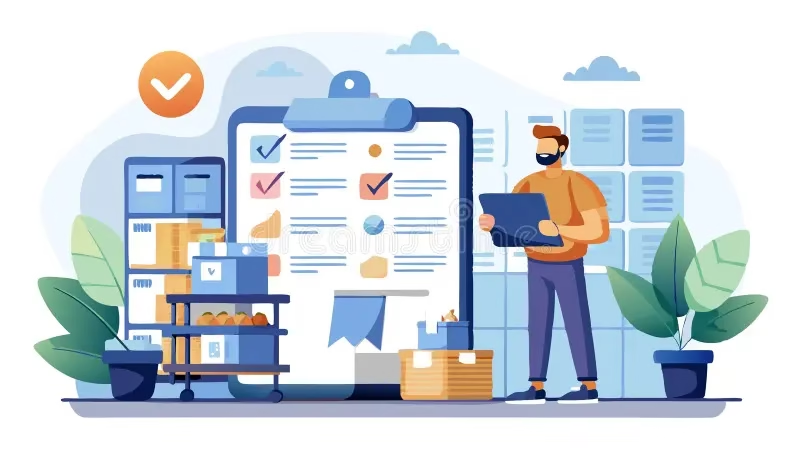In a competitive marketplace, businesses are continuously seeking ways to optimize their resources and improve their offerings. One effective strategy is utilizing low minimum orders, which allow companies to test new products, reduce financial risk, and respond dynamically to market demands. By making every item count, brands can maximize the impact of their investments while maintaining flexibility in their operations.
This article explores the nuances of low minimum orders and how businesses can leverage them for maximum effect. With insights from industry experts and practical examples, readers will gain a comprehensive understanding of how to make the most out of low minimums.

Understanding Low Minimums
Low minimums refer to the smallest quantity of products that a supplier is willing to sell at one time. Traditionally, businesses have faced high minimum order requirements, which can pose a barrier, especially for smaller companies or those looking to introduce new items without committing to large inventory purchases.
Low minimum orders are typically defined as quantities that range from a single unit up to about 100 units, depending on the supplier and product type. This flexibility enables businesses to experiment with different products, colours, or sizes without significant financial commitment.
Benefits of Low Minimums
1. Reduced Financial Risk: By ordering smaller quantities, businesses can mitigate the risk associated with overstocking.
2. Flexibility: Companies can adapt quickly to changing consumer preferences or market trends.
3. Testing New Products: Low minimums allow brands to trial new items before scaling up production.
4. Inventory Management: Businesses can maintain leaner inventories, which can lead to lower storage costs.
The Importance of Low Minimum Orders
The significance of low minimum orders extends beyond mere convenience; they play a crucial role in today’s business landscape, characterized by rapid changes and customer unpredictability.
Market Responsiveness
In an age where consumer preferences shift rapidly, being able to respond quickly is essential. Low minimum orders provide businesses with the agility needed to adapt their offerings based on real-time feedback and sales data.
Cost Efficiency
High inventory costs can strain cash flow, particularly for startups and small enterprises. By leveraging low minimums, companies can invest their capital more strategically into marketing and customer engagement rather than tying it up in excess stock.
Strategies for Maximizing Impact with Low Minimums
To truly harness the power of low minimum orders, businesses should adopt strategic approaches that enhance their effectiveness.
1. Product Sampling
Offering product samples allows customers to experience items before making larger purchases. By using low minimums for sampling campaigns, brands can collect valuable feedback that informs future product development.
2. Limited Edition Runs
Creating limited edition products can generate buzz and urgency among consumers. By utilizing low minimum orders for these exclusive items, brands can drive demand while testing the waters for potential full-scale launches.
3. Seasonal Promotions
Seasonal promotions are an excellent opportunity to leverage low minimum orders effectively. Companies can customize their offerings based on specific holidays or events without committing extensive resources upfront.
4. Collaborations with Influencers
Partnering with influencers who resonate with target audiences can amplify brand visibility significantly. Brands can use low minimum orders to create unique bundles or collaboration products that influencers promote, resulting in increased engagement and sales.
Case Studies: Success Stories
Real-world applications of low minimum strategies provide concrete evidence of their effectiveness.
Case Study 1: A Local Coffee Roaster
A small coffee roaster faced challenges in introducing new blends due to high minimum order requirements from suppliers. By switching to a supplier that offered low minimum orders through Totally Branded, they could test different blends in small batches. This approach allowed them to gauge customer response before committing to larger quantities, ultimately leading to successful new product launches that captured market interest.
Case Study 2: An Eco-Friendly Apparel Brand
An eco-friendly apparel brand utilized low minimum orders to trial materials sourced from sustainable suppliers. This experimentation not only aligned with their brand values but also attracted a niche audience passionate about sustainability. The ability to adjust production based on customer feedback helped them refine their offerings while minimizing waste.
The Role of Personalization
Personalization has become a key driver in consumer purchasing decisions today. Brands can use low minimum orders as a way to offer personalized products without incurring significant risks.
Customization Options
By offering customizable options such as colours or designs on low minimum orders, businesses can create unique products tailored specifically for individual customers or targeted demographics.
Customer Engagement
Encouraging customers to participate in product selection fosters a sense of ownership and loyalty towards the brand. Utilizing social media polls or surveys allows companies to gather insights into consumer preferences while keeping them engaged throughout the process.
Enhancing Brand Visibility with Low Minimums
Visibility is crucial in a crowded marketplace; therefore, brands should maximize their exposure through strategic marketing efforts linked with low minimum orders.
Social Media Campaigns
Utilizing platforms like Instagram or TikTok allows brands to showcase limited-edition products or seasonal offerings effectively. Engaging content featuring these items not only raises awareness but also drives traffic towards e-commerce channels where low minimum options are available.
Collaborations and Partnerships
Working alongside other brands or local businesses enhances visibility through cross-promotion efforts. When utilizing low minimum orders, companies can create collaborative products that benefit both parties while expanding their reach within different consumer segments.
Leveraging Technology for Efficient Ordering
Incorporating technology into the ordering process can streamline operations related to low minimum purchases significantly.
E-Commerce Platforms
Choosing e-commerce platforms that facilitate easy ordering processes is vital for businesses selling lower quantities efficiently online. Integrating features such as automated inventory management systems helps manage stock levels based on customer demand seamlessly.
Data Analysis Tools
Investing in data analysis tools allows brands using low minimum strategies access valuable insights into consumer behaviour patterns over time—enabling them to better understand which products resonate most strongly with their audience.
Working with Totally Branded
Totally Branded specializes in providing solutions tailored specifically for companies looking to implement effective strategies around low minimum orders seamlessly across various industries.
By partnering with Totally Branded, businesses gain access not only to an extensive product range but also expertise in optimizing supply chain logistics—ensuring timely delivery while maintaining quality standards needed when operating under lower volume constraints effectively.
With personalized support from professionals experienced in navigating these challenges successfully, companies stand positioned advantageously against competitors who may overlook these opportunities altogether due to a lack of awareness about potential benefits afforded by this model effectively harnessed through strategic partnerships like those offered by Totally Branded.
Incorporating these strategies into your business plan will enable you not only to stay ahead but to thrive uniquely within your market sector while maximizing every item count significantly along the journey!
In essence, leveraging low minimums is not merely about cost-saving; it is about creating opportunities that resonate deeply within today’s dynamic market landscape while fostering relationships cultivated through thoughtful engagement practices elevated by strategic implementations across various operational touchpoints, effectively moving forward!
Table of Contents
1. Introduction
2. Understanding Low Minimums
3. The Importance of Low Minimum Orders
4. Strategies for Maximizing Impact with Low Minimums
5. Case Studies: Success Stories
6. The Role of Personalization
7. Enhancing Brand Visibility with Low Minimums
8. Leveraging Technology for Efficient Ordering
9. Working with Totally Branded
10. Conclusion and Next Steps















